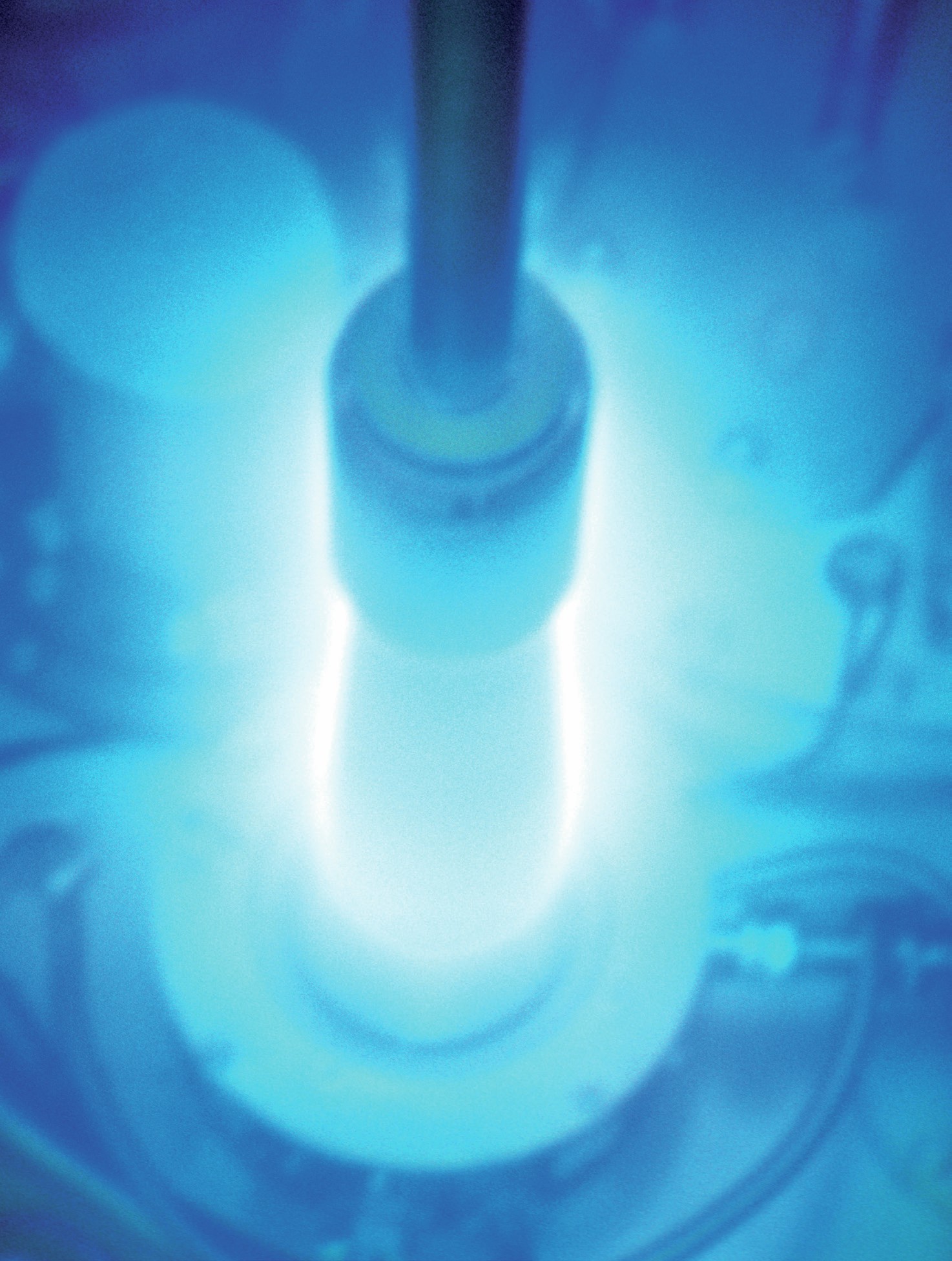
Water in a nuclear reactor glows with a blue light (Figure 1). This radiation, discovered in 1934 by Russian physicist Pavel Cherenkov (1904–90), is produced by energetic electrons. Electrons (beta particles) emerge from a nuclear reactor close to the speed of light in a vacuum (3 × 108ms–1), but the speed of light in water is only about 2 × 108ms–1.
When a charged particle changes its velocity, it emits electromagnetic radiation. Cherenkov radiation is produced when the particle moves through a material faster than the speed of light in that material, and the emitted waves combine to make a ‘shock wave’ of radiation (Figure 2), similar to the sonic boom from an aircraft flying faster than the speed of sound in air. To see an animation, go to: https://en.wikipedia.org/wiki/Cherenkov_radiation
Your organisation does not have access to this article.
Sign up today to give your students the edge they need to achieve their best grades with subject expertise
Subscribe




